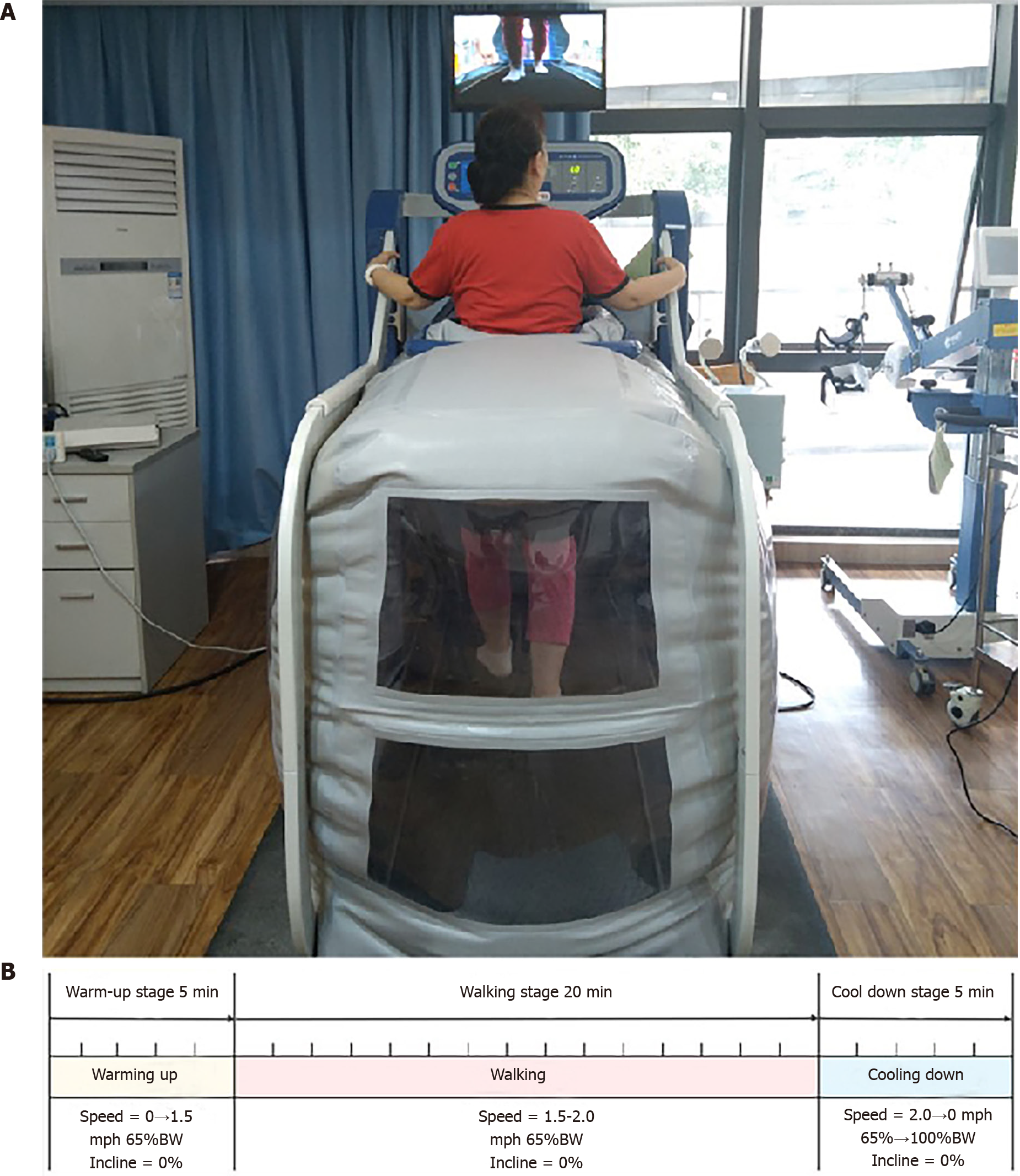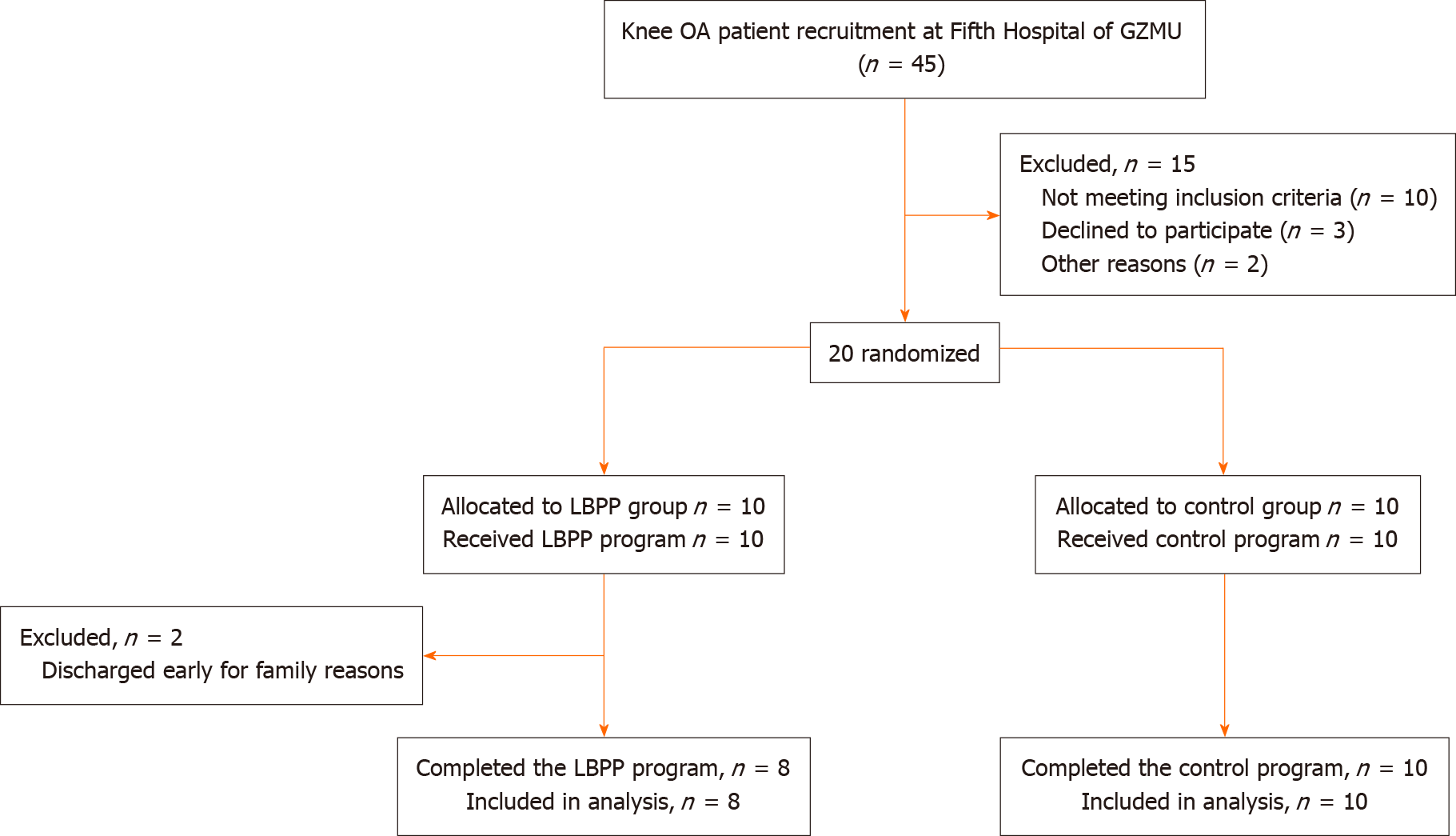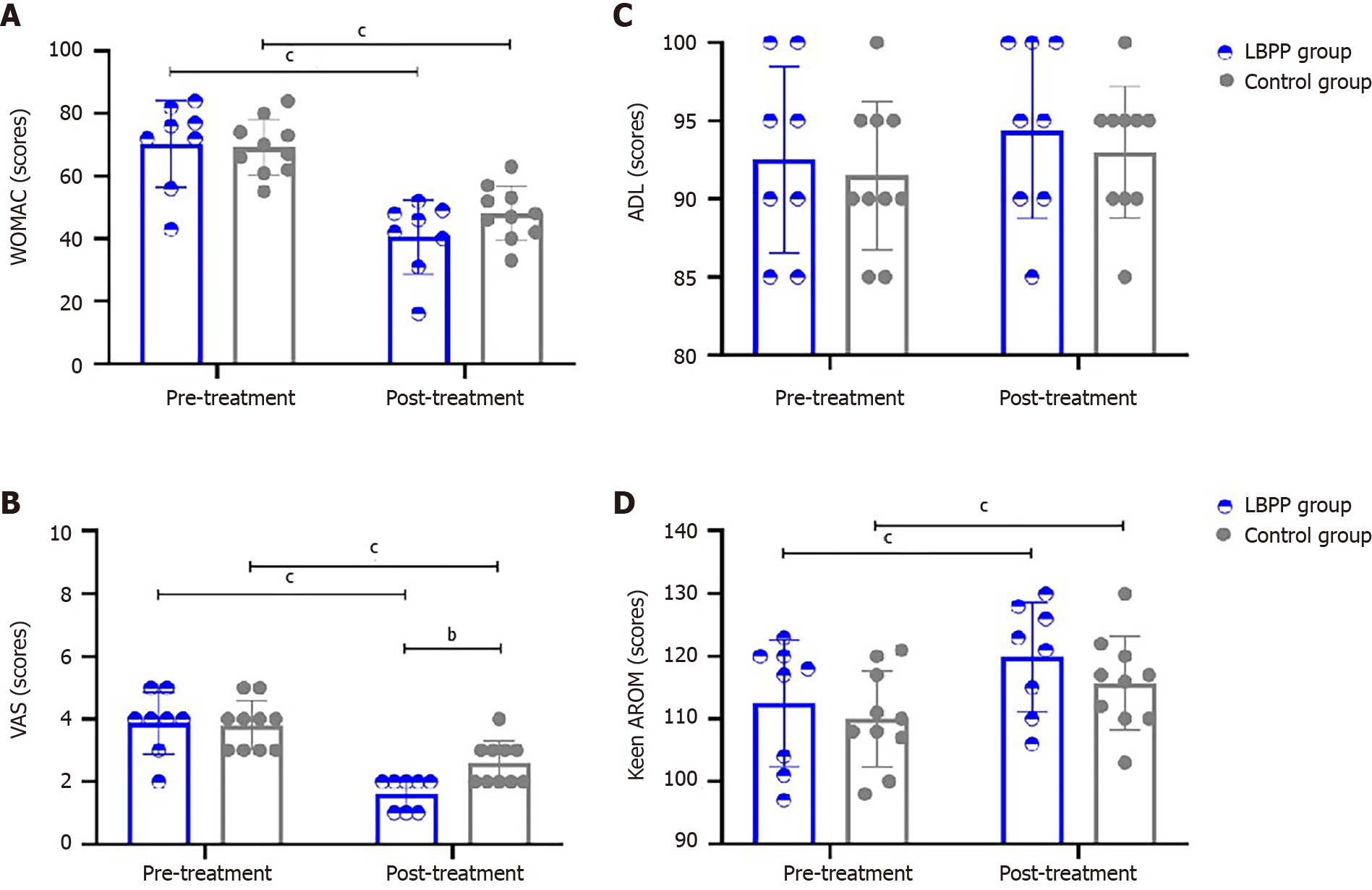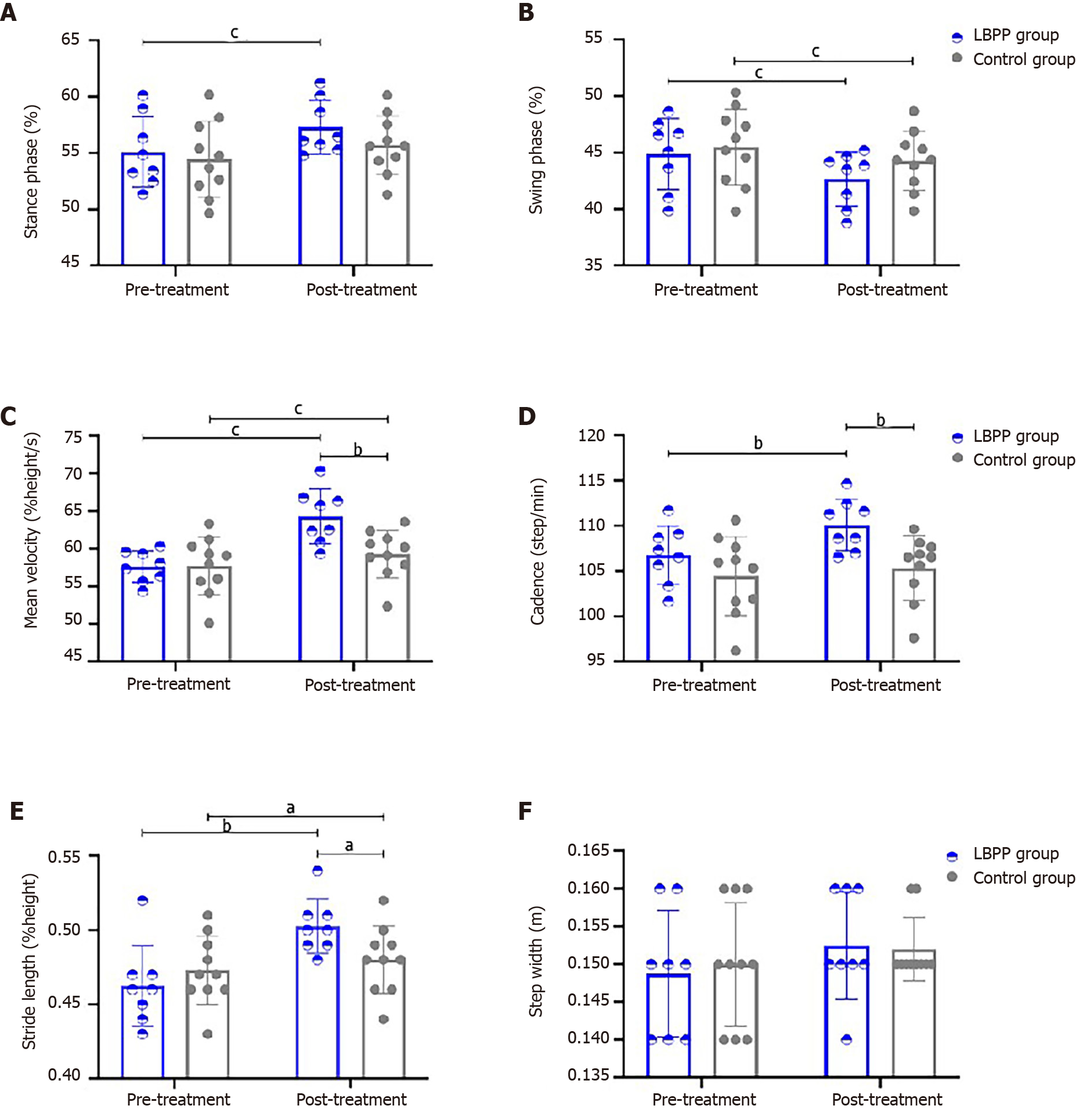Copyright
©The Author(s) 2021.
World J Clin Cases. Dec 6, 2021; 9(34): 10604-10615
Published online Dec 6, 2021. doi: 10.12998/wjcc.v9.i34.10604
Published online Dec 6, 2021. doi: 10.12998/wjcc.v9.i34.10604
Figure 1 The lower body positive pressure setting.
A: The basic lower body positive pressure (LBPP) treadmill setting for walking training; B: The LBPP training protocol. LBPP: Lower body positive pressure; BW: Body weight; mph: Miles per hour.
Figure 2 Flow schematic of the study.
OA: Osteoarthritis; GZMU: Guangzhou Medical University; LBPP: Lower body positive pressure.
Figure 3 Comparison of clinical assessment parameters within group (between pre- and post-treatment) and among groups (between lower body positive pressure group and control group).
A: Western Ontario and McMaster Universities Index (scores); B: Activity of daily living (scores); C: Visual analogue scale (scores); D: Keen active joint range of motion flex-extension (degrees). b0.001 ≤ P < 0.01, cP < 0.001. LBPP: Lower body positive pressure; WOMAC: Western Ontario and McMaster Universities Index; VAS: Visual analogue scale; AROM: Active joint range of motion; ADL: Activity of daily living.
Figure 4 Comparison of spatiotemporal parameters within group (between pre- and post-treatment) and among groups (between lower body positive pressure group and control group).
A: Stance phase in gait cycle (%); B: Swing phase in gait cycle (%); C: Mean velocity (%height/s); D: Cadence (steps/min); E: Stride length (%height); F: Step width (m). a0.01 ≤ P < 0.05, b0.001 ≤ P < 0.01, and cP < 0.001. LBPP: Lower body positive pressure.
- Citation: Chen HX, Zhan YX, Ou HN, You YY, Li WY, Jiang SS, Zheng MF, Zhang LZ, Chen K, Chen QX. Effects of lower body positive pressure treadmill on functional improvement in knee osteoarthritis: A randomized clinical trial study. World J Clin Cases 2021; 9(34): 10604-10615
- URL: https://www.wjgnet.com/2307-8960/full/v9/i34/10604.htm
- DOI: https://dx.doi.org/10.12998/wjcc.v9.i34.10604












